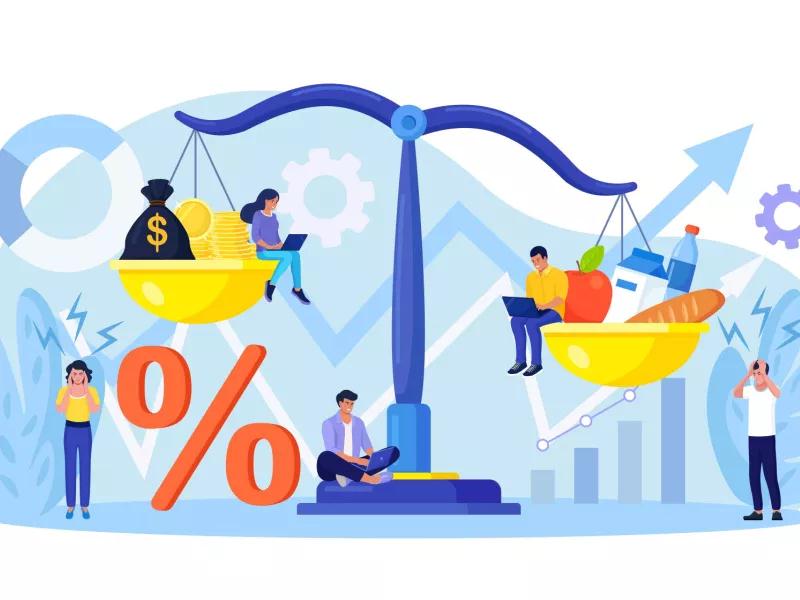What are SMEs? SMEs means small and medium enterprise.
However, what an SMEs or small or medium enterprise is depends on exactly who is defining it. Depending on the country, company size can be classified based on the number of employees, annual sales, assets, or any combination of these. It can also vary from industry to industry (as it does in the US)
Key aspects:
Small and medium enterprises (SMEs) are companies that maintain revenue, assets or a number of employees below a certain threshold.
Each country has its own definition of what constitutes a small and medium-sized enterprise (SMEs).
Small and medium-sized enterprises (SMEs) play an important role in the economy, employing large numbers of people and helping to shape innovation.
Governments regularly offer incentives, including favorable tax treatment and better access to loans, to help them stay in business.
SMEs and the global economy
SMEs make up the vast majority of businesses in most countries.
According to 2016 US Census Bureau data, of the 5.6 million employer signatures in the US:
99.7% had less than 500 employees
98.2% had less than 100 employees
89.0% had less than 20 employees
According to data from the US Census Bureau, in 2014, SMEs businesses with fewer than 20 workers represented 97.9 percent of all businesses in the US, contributing 46 percent of private GDP non-agricultural in 2008 (the most recent year for which review data is available), making them enormously important for economic growth, innovation and diversity.
Due to their contribution to the economy and their overall greater difficulty in obtaining financing and their higher fixed cost of taxes and regulatory compliance, SMEs often receive more favorable tax treatment and incentives. Depending on the country, governments can use a variety of policies to encourage SMEs growth.
Industries dominated by SMEs
As expected, most SMEs reside in industries that do not require large initial capital investments. In 2016, according to loan approval rates from the United States Small Business Administration (SBA), the fastest growing SMEs are in the following sectors:
- Legal offices
- Fitness and Recreation Centers
- General, local cargo transport
- Dentist offices
- All other specialty trade contractors
- Gardening services
- Beverage and non-alcoholic beverage bars.
- Veterinary services
- Other personal care services
- Drinking places (alcoholic drinks)
- All other personal services.
- Medical consultants
- Hotels (except casino hotels) and motels
- Engineering services
- Limited service restaurants
- Beauty salons
- Childcare services
- Beer, wine and liquor stores.
- Construction of single-family homes
- Full service restaurants.
Special Considerations
Small and medium-sized enterprises (SMEs) are often considered the heart of emerging and developed economies. They are responsible for providing many jobs and in the US contributed 46% of private non-agricultural gross domestic product (GDP) in 2008.
Jobs and GDP
Many people in emerging economies find work in small and medium-sized enterprises (SMEs). SMEs contribute approximately 45% of total employment and 33% of GDP in these countries, according to the Organization for Economic Co-operation and Development (OECD).
The importance of small and medium-sized enterprises (SMEs) is not limited to emerging nations. Between 2002 and 2012, small and medium-sized businesses (SMEs) created 77% of new jobs in Canada , almost the same percentage as in most emerging economies. These companies are very important for the well-being of the country, both in terms of job creation and generation of tax revenue. The same is true in the US, where small businesses accounted for 64% of net new jobs created between 1993 and 2011.
Government incentives
However, life for a small and medium-sized enterprise (SMEs) entrepreneur is not always easy. These companies typically struggle to attract capital to finance their efforts and often struggle to pay taxes and meet regulatory compliance obligations.
Governments recognize the importance of small and medium-sized enterprises (SMEs) in the economy and regularly offer incentives, including favorable tax treatment and better access to loans, to help them stay in business.
They also offer educational programs, training small and medium enterprise (SMEs) business owners on how to make their businesses grow and survive, as well as special audit programs to target high-risk areas and boost tax compliance.
Definition of US SMEs
In the United States, the definition of an SMEs varies by industry, according to the North American Industry Classification System (NAICS). NAICS is a system developed by the US, Canada and Mexico to standardize and facilitate the collection and analysis of business statistics.
The U.S. Small Business Administration (SBA) provides a list of small business size standards that match NAICS codes. To be considered a small business and be eligible to apply for government contracts and specific funds, a business must fall within defined limits in terms of a number of employees or revenue.
In manufacturing, for example, an SMEs is defined as a company that has 500 employees or less, while in wholesale businesses it is usually 100 employees or less. Ranges within sectors can vary quite a bit. For example, in Sector 21, Mining, Quarrying and Oil and Gas Extraction, a company involved in Copper Ore and Nickel Ore Mining can have up to 1,500 employees and still be considered an SMEs, while a company involved in Silver Ore Mining alone can have up to 250 employees.
Definition of SME in Canada
Industry Canada uses the term SMEs to refer to businesses with fewer than 500 employees while classifying businesses with 500 or more employees as “large” businesses.
Breaking down the definition of an SMEs, Industry Canada defines a small business as one that has fewer than 100 employees (if the business is a goods producer) or fewer than 50 employees (if the business is a service-based business). A company that has more employees than these cut-off points but fewer than 500 employees is classified as a medium-sized company.
A microbusiness is defined as a business with fewer than five employees.
In its ongoing research program collecting data on SMEs in Canada, Statistics Canada defines an SMEs as any business establishment with 0 to 499 employees and less than $50 million in gross revenue.
Definition of SMEs in the European Union (EU)
In the EU, a similar system is used to define small and medium-sized enterprises. A company with fewer than 250 employees is classified as medium; A business with fewer than 50 employees is classified as small, and a business with fewer than 10 is considered a microbusiness. The European system also takes into account a company’s turnover rate and its balance sheet. From the definition of the European Commission .
Definition of UK SMEs
There is no standard to define an SMEs in the UK. The most generally accepted SMEs classification is that used by the EU (above).
Definition of SMEs in China
China’s definition of an SMEs varies by industry.
Here are some examples:
Comparison of definitions of Chinese SMEs
Company industry, Active personnel in the company and Assets in yuan.
Heavy industry : They have less than a thousand employees. / less than 400 million yuan in assets.
Wholesale trade : Less than 200 employees. / less than 400 million yuan.
Retail : Less than 300 employees. / Less than 200 million yuan.
Transportation : Less than 1000 employees / less than 300 million yuan.
Warehousing: Less than 200 employees/less than 300 million yuan.
Hospitality: Less than 300 employees / less than 100 million yuan.
Restaurant and catering: Less than 300 employees / less than 100 million yuan.
Software/IT : Less than 300 employees/less than 100 million yuan.
Real estate development: Less than 2000 employees / less than 100 million yuan.
Information transmission: Less than 2000 employees / less than 1 billion yuan.
*According to data from the Ministry of Industry and Information Technology, the National Bureau of Statistics, the National Development and Reform Commission and the Ministry of Commerce of China (July 7, 2011).











